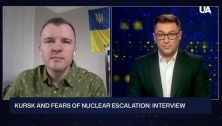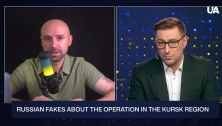Since Russia’s hybrid aggression against Ukraine began in 2014, Ukraine’s mobilization efforts have been heavily targeted by Russian state security services. They initiated numerous disinformation campaigns, injecting messages into Ukraine’s information space to undermine trust in the country’s military and political leadership and to sow divisions within society. These efforts included promoting narratives of a “civil conflict” and a “war between oligarchs,” aiming to discourage ordinary Ukrainians from participating.
By organizing “wives and mothers protests” and “anti-war demonstrations,” Russia wanted to obstruct the operations of military enlistment offices. By 2016, the mobilization of reservists had ceased. However, following the full-scale invasion on February 24, 2022, President Volodymyr Zelenskyy announced a general mobilization, prompting an immediate new Russian campaign to disrupt it.
Center for Strategic Communications “Spravdi” made a publication about Russia`s politics against mobilization in Ukraine.
Key anti-mobilization messages
An important element of this disinformation campaign is that the anti-mobilization messages should contain a kernel of truth, and ideally be spread organically by Ukrainians affected by it, not only by Russian propaganda, These messages include:
● mobilization is illegal due to the “wrong” martial law in Ukraine (it is contrasted with the “correct” state of war);
● territorial recruitment and social support centres (TRC) are not part of the Armed Forces but “private companies”, and therefore are not authorized to mobilize people;
● someone else should fight: MPs, civil servants, policemen, customs officers, border guards, judges, professional/contract soldiers, etc. (but not mobilized civilians);
● TRCs are totally corrupt, so the rich can bribe them to avoid mobilization while the poor have to serve;
● the Armed Forces suffer heavy losses, the commanders do not protect the lives of soldiers, therefore the mobilized are doomed to die;
● it is not worth fighting for a corrupt authority that violates the rights of citizens and closes borders;
● the Russian army is invincible and resisting is pointless.
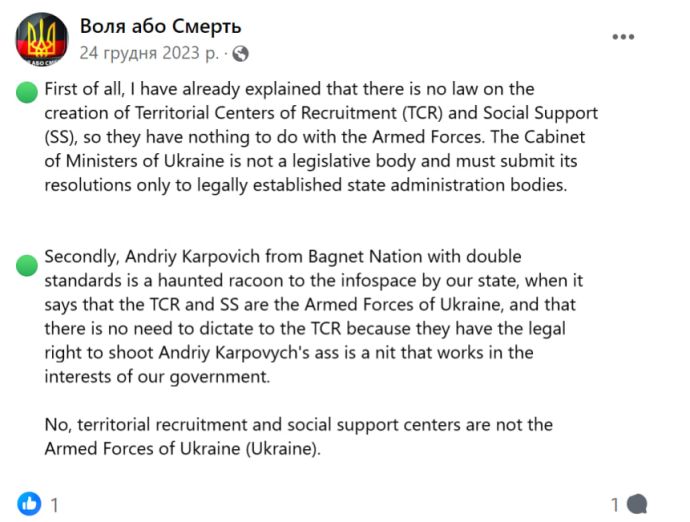
As the publication explains next, since 2022, Kremlin propaganda efforts have focused on weakening Ukraine’s resistance to Russian aggression by artificially creating internal conflicts and turning different groups of citizens against each other. Beyond the usual tactic of dividing the Ukrainian-speaking population in the West from the Russian-speaking population in the East, the Kremlin has also sought to create tensions between internally displaced persons (IDPs) and the residents of the regions hosting them, as well as between refugees and those who stayed in Ukraine, or civilians and the military.
A particularly damaging aspect of the anti-mobilization campaign is the demonization of Territorial Recruitment Centers (TRCs) employees, as this serves Russia’s broader goal of undermining the credibility of Ukraine’s Armed Forces as a whole.
Kremlin operatives conducting these psychological operations exploit natural human fears—such as fear of death, mutilation, and the unknown—while also capitalizing on genuine organizational shortcomings, abuses, and misconduct by officials.
Russian authorities meticulously monitor the Ukrainian media space, using it to spread anti-mobilization narratives. They highlight incidents of bribery and other abuses by TRC employees, and they amplify any conflicts involving the military, military losses, illegal border crossings by men, and similar issues.
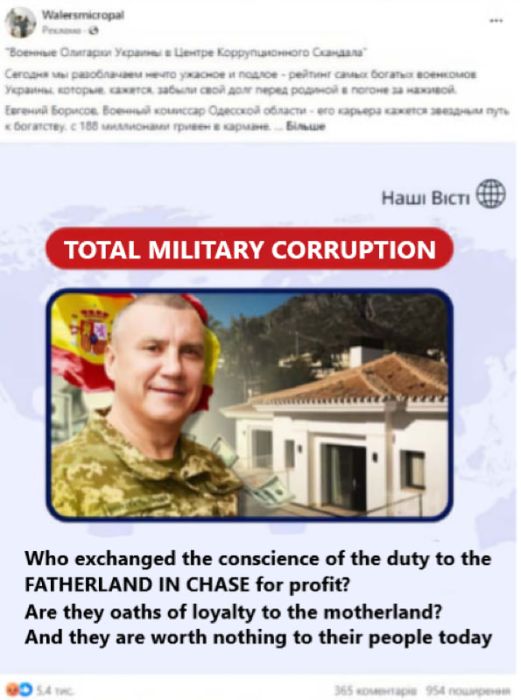
The pro-Kremlin disinformation combines anti-mobilization messages with real facts, manipulation, and fakes, to lead the propaganda consumers to conclude that:
● Ukrainian state is the enemy of its citizens;
● Ukrainian military poses a danger to civilians;
● only losers are mobilized; avoiding mobilization is success.
The objective of the Russian anti-mobilization campaign is to affect Ukrainian behavior. Throughout 2022-23, the information manipulation efforts focused on encouraging passive evasion strategies, such as ignoring military registration, avoiding contact with Territorial Recruitment Centers (TRCs), and fabricating reasons to obtain deferments. From late 2023 to early 2024, the focus shifted towards promoting and normalizing more active forms of evasion, including illegal border crossings, violence against TRC employees, and the burning of vehicles.
How Russia`s manipulative tactics works?
To execute this information manipulation operation, the Kremlin employs a range of combined methods, including Russian influence networks within Ukraine, media resources such as websites, social media profiles, and Telegram channels, as well as bot farms and troll factories. In 2022, numerous regional Telegram channels were established to disseminate false information about locations where TRC employees were supposedly issuing mobilization summons.
The propaganda and disinformation apparatus exploits political and popular topics on Ukrainian social networks for its own ends. Between March and November 2023, research conducted by the Centre for Strategic Communications and Information Security, in collaboration with the Centre for Democracy and Rule of Law, identified 596 advertising messages containing disinformation and Russian propaganda aimed at Ukrainian audiences. Of these, 136 messages (approximately 23%) and 82 messages (around 14%) specifically promoted Russian narratives about the situation at the frontline and mobilization efforts in Ukraine, totaling nearly 37%.
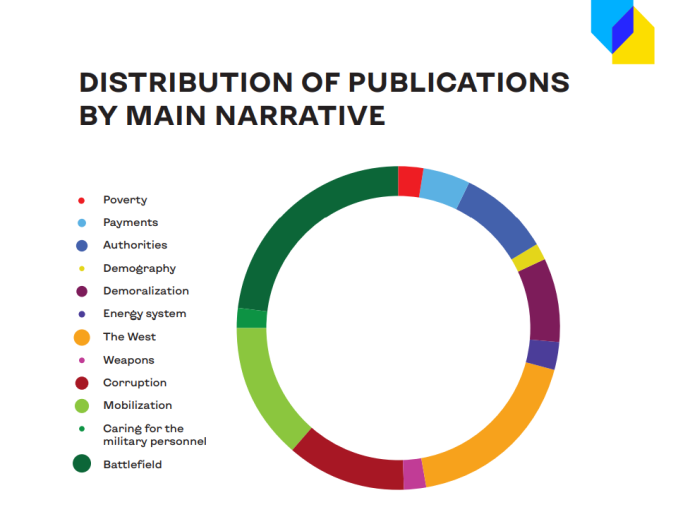
Russian propagandists leverage TikTok as a gateway into the Ukrainian media landscape. Research by the Texty.org.ua project has found that the recommendation algorithms on TikTok, as with some other social networks, promote videos before the moderation algorithms responsible for blocking and removing inappropriate content have a chance to review them. This means that Ukrainian TikTok users are highly likely to encounter Russian disinformation and propaganda through popular hashtags, even if they do not follow pages dedicated to such content.
In mid-July, the hashtag #ТЦК (TRC) was the most popular in the Ukrainian TikTok segment.
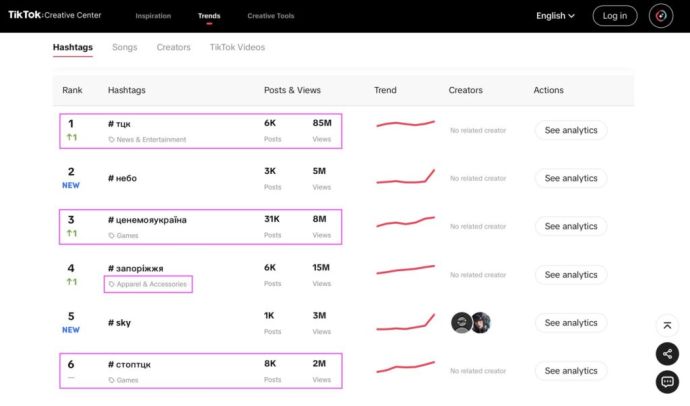
Most of the content with this hashtag is aimed at discrediting the mobilization in Ukraine. In July the Top 10 popular hashtags included the following anti-mobilization hashtags: #стоптцк (stop TRC), #народпротитцк (people against TRC), #спротивтцк (resistance against TRC), #протесттцк (protest against TRC), as well as the anti-state hashtag #ценемояукраїна (Ukraine is not my country).
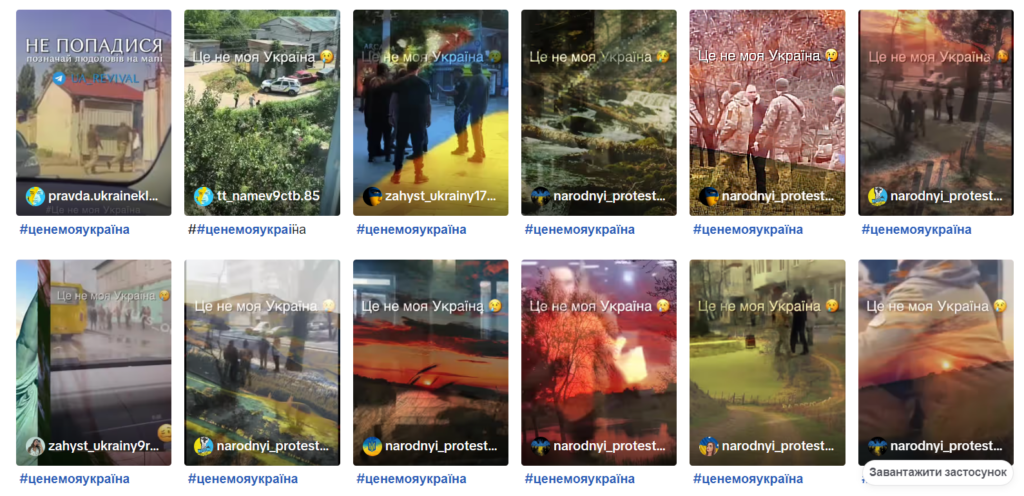
They mostly accompany videos (both real and staged) with conflicts involving TRC personnel, as well as abuse stories retelling and instructions on how to avoid and actively counter mobilization, taken out of context, or simply unfortunate quotes from military interviews about the need for mobilization, etc.
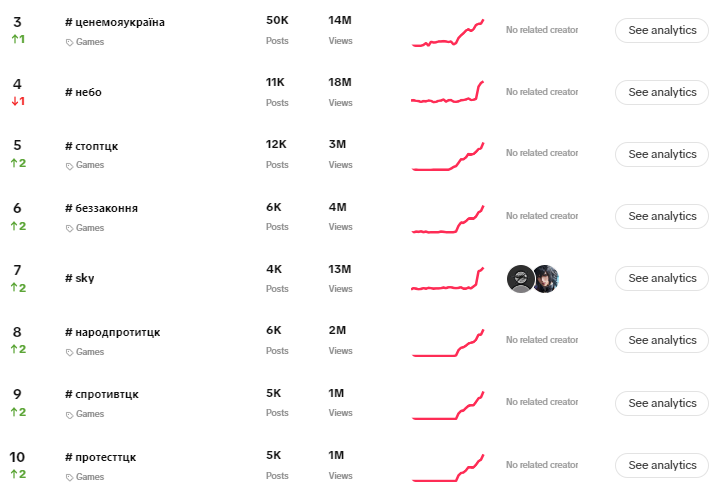
Setting fire to military vehicles in Ukrainian cities, along with its media coverage, is one of the methods used for active resistance to mobilization. According to an investigation by the Important Stories publication, advertisements began appearing on Russian-language darknet forums in early June, offering financial rewards for setting fire to TRC vehicles. This primarily involved the Hydra forum, known for its focus on drug trafficking and other illegal activities. The forum frequently changes its address on the Tor network.
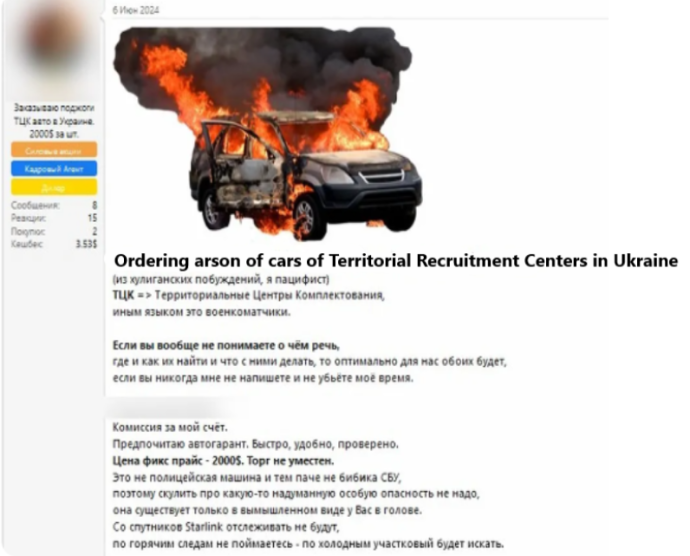
The Security Service of Ukraine and the Prosecutor General’s Office have reported the arrest of suspects involved in burning military vehicles, who received their instructions via Telegram. Videos and photos of these incidents are being circulated through Russian media networks as proof of “popular resistance” to mobilization. These materials, particularly on TikTok, are often accompanied by hashtags like #ТЦК.
Propaganda resources, including Russian state-controlled outlets, are amplifying these incidents to portray them as part of a broader narrative of “popular resistance” to mobilization and “conflict between Ukrainians and the authorities,” including President Volodymyr Zelenskyy personally. On July 21, the TASS Russian State News Agency disseminated numerous reports claiming to feature interviews with members of the “pro-Russian resistance” in Ukraine. These reports depict the burning of military vehicles and relay boxes—classic acts of sabotage against transport infrastructure—as supposed “resistance actions” by individuals facing mobilization.
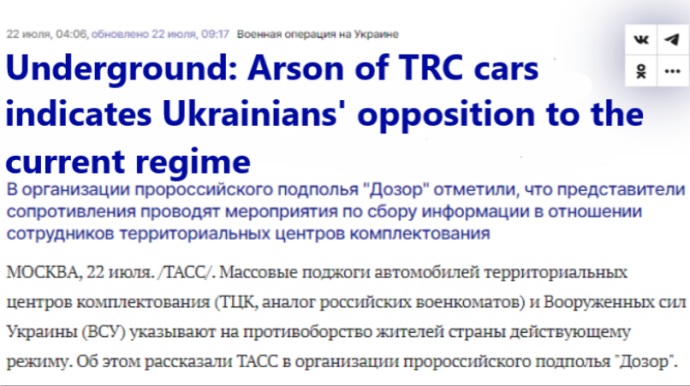
Over the next three days, this story was shared by more than 40 Russian and pro-Kremlin resources: Telegram-channels, Facebook pages, and websites. About 40 more messages were published on the Russian VKontakte and Odnoklassniki social networks.
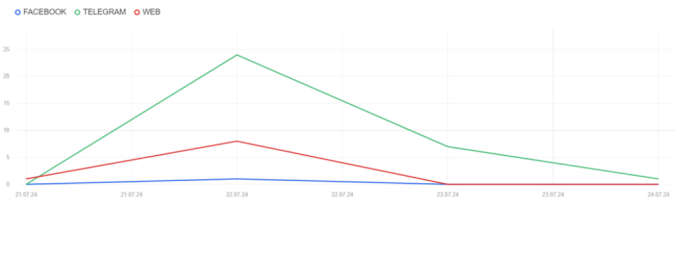
Russian propaganda tries to include incidents that resonate with people, e.g. content related to violence and suicide attempts, in the anti-mobilization narratives. On July 18, a woman set herself on fire near the courthouse in the Bila Tserkva raion of the Kyiv region. Russian propaganda sources presented it as an “act of resistance” because the court did not grant her husband a postponement from mobilization.
The fake is obvious, because postponements from mobilization can only be issued in the TRC, not in courts. Over 40 Russian and pro-Russian websites and Telegram-channels spread this fake within three days (monitoring tools detected 50 messages).
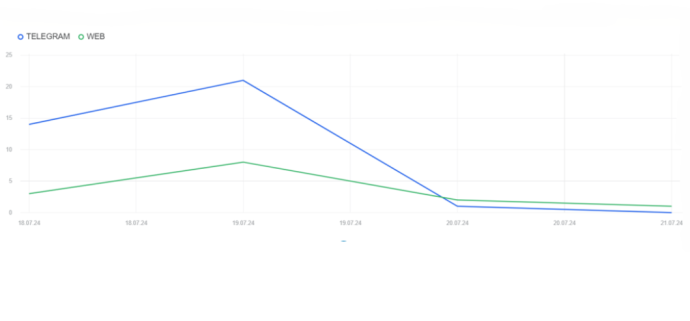
Find more information at spravdi.gov.ua
The publication makes the following conclusions:
- Russia is directly interested in weakening Ukraine’s defence capabilities. Therefore, its efforts are aimed at disrupting Ukrainian mobilization.
- The Kremlin uses all the arsenal of Russian state security services’ methods and propagandists to the coordinated distribution of disinformation, information manipulation, creation of false news, recruitment of agents, and sabotage. They are using a combination of tools that complement each other.
- Russia is trying to convince Ukrainians that their real enemy is not the aggressor but their own state, undermine trust in the Armed Forces, generate internal conflicts, and turn them into a violent confrontation. Or, with the help of the media, create an illusion that such a confrontation is about to unfold.
Read also: Ukraine is changing the world politics. Interview with Kurt Walker





